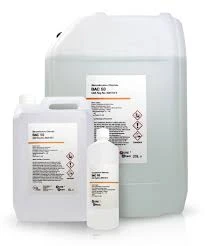Polyacrylamide Use in Advancing Water Treatment Technologies and Techniques
Polyacrylamide in Water Treatment An Overview
Water treatment is a critical process in ensuring the availability of clean and safe drinking water. Among various chemicals used in this process, polyacrylamide (PAM) has emerged as a highly effective agent. This article will explore the properties, applications, and benefits of polyacrylamide in water treatment.
What is Polyacrylamide?
Polyacrylamide is a synthetic polymer made from acrylamide monomers. It is available in a range of forms, including powder and liquid, and can be tailored with different functional groups to suit specific applications. PAM is primarily used as a flocculant in water and wastewater treatment processes. Its ability to form networks and agglomerates makes it particularly effective in separating suspended solids from liquids.
Mechanism of Action
The flocculation process involves the aggregation of suspended particles into larger clumps known as flocs, which can easily be removed from the water. Polyacrylamide molecules work by bridging the gaps between particles and increasing the weight of the aggregates. This is achieved through a process known as charge neutralization, where PAM neutralizes the charges on particles, leading them to come together more readily.
The effectiveness of PAM can vary based on its molecular weight and charge density. High-molecular-weight polyacrylamide is generally preferred for applications requiring enhanced flocculation, while low-molecular-weight variants may be used for specific dewatering processes.
Applications in Water Treatment
Polyacrylamide is widely used in various water treatment applications, including
1. Municipal Wastewater Treatment PAM is extensively utilized in municipal wastewater treatment plants to facilitate the removal of suspended solids, organic matter, and pathogens. By improving the sedimentation process in clarifiers, it helps to enhance overall treatment efficacy.
2. Industrial Wastewater Treatment Many industries, such as textiles, food processing, and mining, generate wastewater containing high levels of contaminants. PAM is employed to treat these effluents, enabling the recovery of water for reuse and minimizing environmental impact.
3. Sludge Dewatering Polyacrylamide aids in the dewatering of sludge generated during water treatment processes. By flocculating the particles in the sludge, PAM allows for more efficient removal of water, reducing the volume of waste that needs to be disposed of.
polyacrylamide water treatment

4. Drinking Water Treatment In drinking water treatment, PAM is used to remove turbidity and organic matter, improving water clarity and quality. This is particularly important for achieving compliance with regulatory standards.
Benefits of Using Polyacrylamide
The use of polyacrylamide in water treatment offers numerous advantages
1. Improved Efficiency PAM enhances the efficiency of the flocculation and sedimentation processes, leading to better removal rates of suspended solids and contaminants.
2. Cost-Effective By improving overall treatment performance, polyacrylamide can reduce operational costs associated with chemical use and energy consumption.
3. Environmental Friendly PAM is generally considered safe for the environment when used as directed. Its ability to reduce pollutants enhances the quality of treated water, supporting ecological health.
4. Versatility The customizable nature of polyacrylamide allows it to be tailored for various applications across different sectors, making it a versatile choice for water treatment.
Considerations and Safety
Despite its many benefits, the use of polyacrylamide in water treatment must be approached with caution. Acrylamide, the monomer used to produce PAM, is a toxic substance, necessitating careful handling and application. Regulatory guidelines should be followed to minimize any risks associated with its use.
Additionally, when selecting polyacrylamide products, it is crucial to consider their intended application, as the wrong type may lead to ineffective treatment or adverse effects on water quality.
Conclusion
Polyacrylamide is an invaluable tool in the water treatment industry, offering solutions that enhance water quality and promote environmental sustainability. Its role in flocculation and sludge dewatering is essential for both municipal and industrial applications. As the demand for clean water continues to rise, the importance of effective water treatment agents like polyacrylamide will only become more pronounced. Properly leveraging its properties can lead to significant improvements in water management practices, benefiting both society and the environment at large.
-
Water Treatment with Flocculant Water TreatmentNewsJun.12,2025
-
Polymaleic AnhydrideNewsJun.12,2025
-
Polyaspartic AcidNewsJun.12,2025
-
Enhance Industrial Processes with IsothiazolinonesNewsJun.12,2025
-
Enhance Industrial Processes with PBTCA SolutionsNewsJun.12,2025
-
Dodecyldimethylbenzylammonium Chloride SolutionsNewsJun.12,2025





